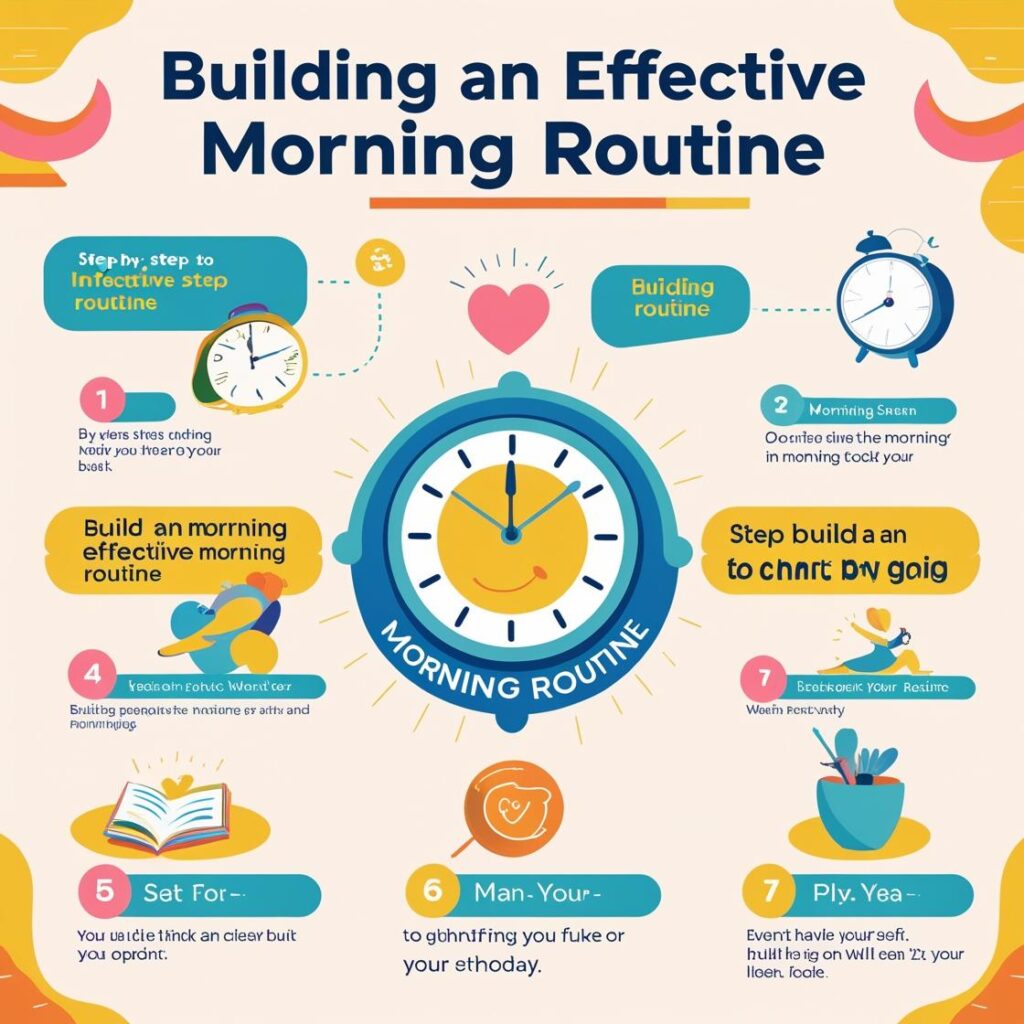Creating a morning routine that actually works isn’t about mimicking someone else’s habits or waking up at 5 a.m. It’s about crafting a personalized structure that energizes your day, aligns with your goals, and makes you feel grounded. In this guide, we’ll walk you through how to build a morning routine that sets you up for long-term success.
اقرأ أيضاً: قائمة بأهم 10 كورسات مجانية في الذكاء الاصطناعي مع الروابط المباشرة
1. Understand the Purpose of a Morning Routine
Before jumping into habits and schedules, it’s essential to understand why a morning routine matters. A well-structured morning routine can:
اقرأ أيضاً: كيفية الحصول على منحة دراسية مجانية
- Boost productivity and focus
- Reduce stress and decision fatigue
- Reinforce positive habits
- Create a sense of control and clarity
When you understand the purpose, you’re more likely to stay consistent because your actions are rooted in intention.
اقرأ أيضاً: كيف تستيقظ مبكرًا دون الشعور بالتعب
2. Assess Your Current Morning Habits
Start by observing how you currently spend your mornings. Are you hitting snooze multiple times? Do you immediately reach for your phone? Write down your current actions from the moment you wake up.
اقرأ أيضاً: كيف تتفوق في أي مقابلة عمل: 10 نصائح من الخبراء
Identifying unproductive patterns helps you become aware of what needs changing. Keep a log for a few days to better understand where your time goes and what drains or boosts your energy.
اقرأ أيضاً: كيف توفر 1000 دولار في 30 يومًا
3. Define Your Morning Goals
Every effective routine begins with clarity. Ask yourself what you want to achieve each morning. Your goals might include:
اقرأ أيضاً: كيفية كتابة سيرة ذاتية متميزة
- Gaining mental clarity
- Boosting physical energy
- Advancing personal projects
- Reducing anxiety before work
Having defined goals gives your routine a purpose and makes it easier to structure your time.
اقرأ أيضاً: كيف تحول عملك الجانبي إلى مشروع بدوام كامل
4. Prioritize Quality Sleep
No morning routine will be sustainable if you’re constantly sleep-deprived. Sleep is the foundation of a successful start to the day. Aim for 7–9 hours of quality sleep by:
اقرأ أيضاً: كيفية تسريع الكمبيوتر المحمول البطيء في 10 دقائق
- Maintaining a consistent bedtime
- Avoiding screens an hour before sleep
- Creating a relaxing bedtime ritual
Getting enough rest improves your mood, focus, and resilience throughout the day.
اقرأ أيضاً: كيف تبدأ مدونة تقنية من الصفر
5. Start with One Habit at a Time
Trying to overhaul your entire morning in one go is a recipe for burnout. Instead, introduce one habit at a time. Focus on building consistency before adding more layers.
اقرأ أيضاً: كيف تبدأ الرسم (حتى لو كنت تعتقد أنك لا تستطيع)
Examples of simple habits to start with include:
اقرأ أيضاً: كيف تخطط لعطلة عائلية سيحبها الجميع
- Drinking a glass of water
- Stretching for five minutes
- Journaling a single line
- Meditating for two minutes
Gradual habit-building increases your chances of long-term success.
اقرأ أيضاً: كيف تتعلم الجيتار بنفسك
6. Prepare the Night Before
Your morning actually begins the night before. A solid evening routine can set the stage for a smoother start. Consider prepping your clothes, planning your to-do list, or setting out your breakfast.
اقرأ أيضاً: كيف تحزم خفيفًا لرحلة لمدة أسبوعين
This minimizes decision-making in the morning and helps you hit the ground running with less mental clutter.
اقرأ أيضاً: كيف تكتب أول قصة قصيرة لك
7. Limit Screen Time Upon Waking
Avoid diving into emails, news, or social media right after waking up. These activities often trigger stress and reactive thinking.
اقرأ أيضاً: كيف تسافر عبر أوروبا بميزانية محدودة
Instead, give yourself a buffer of 30–60 minutes to focus on your own intentions before engaging with the outside world. This simple boundary can dramatically improve your mindset for the rest of the day.
اقرأ أيضاً: كيف تحمي خصوصيتك على الإنترنت: دليل المبتدئين
8. Move Your Body
Incorporating movement into your morning boosts endorphins and shakes off grogginess. You don’t need a full workout — even a short walk, yoga session, or a few jumping jacks can make a difference.
اقرأ أيضاً: كيف تبدأ في التأمل حتى لو كنت متشككًا
Physical activity increases blood flow and prepares your brain for higher alertness and focus.
اقرأ أيضاً: كيف تساعد الأطفال على بناء عادات دراسية أفضل
9. Include a Mindfulness Practice
Mindfulness helps anchor your thoughts and reduce anxiety. Popular morning mindfulness practices include:
اقرأ أيضاً: كيفية العثور على الجواهر الخفية في أي مدينة
- Meditation
- Deep breathing exercises
- Gratitude journaling
Just a few minutes of presence each morning can foster calm, clarity, and emotional resilience.
10. Review and Adjust Regularly
Your needs and goals will evolve, so your morning routine should too. Every few weeks, take time to reflect on what’s working and what’s not.
Ask yourself:
- Do I feel more energized and productive?
- Which parts of my routine feel forced?
- What small tweaks can I make?
Adapting over time ensures your routine continues to serve your life, not the other way around.
Creating a morning routine is a personal process of discovery. By building it around your needs, staying flexible, and progressing gradually, you can design mornings that truly work for you.



